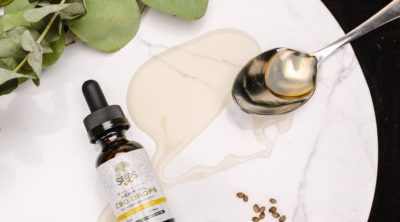Tight shoulder muscles and a dull, aching pain is a common problem for many people, especially those in stressful, sedentary jobs. This HolisticZine article provides some simple tips to loosen tight muscles and relieve pain and uneasiness associated with it.
If you are suffering from extreme shoulder pain, it could be the result of a shoulder injury or bursitis and tendinitis of the rotator cuff. In such cases, consult your doctor before trying any treatment at home.
Do you constantly feel tightness and pain in your shoulders? Many people complain of general uneasiness, like a tight band around their neck and shoulders when they awaken in the morning or during the entire day. Muscle problems, like tension in the neck and stiff shoulders are the result of stress, poor posture, and many other factors. People in sedentary jobs with lots of stress, often suffer from these problems. Unknowingly, they may be holding their bodies in a tense, tight position for long hours. A typical office posture where a person sits for long hours, with rounded shoulders and elbows bent, in front of a computer and papers can lead to muscle strain and stiffness.
Apart from physical and emotional stress, tight shoulder muscles can also be a result of overexertion, muscle injury, or long hours of doing overhead work that requires a person to lift his/her arms above the head. Tight shoulders are often very painful, based on the degree of stiffness. To loosen tight shoulder muscles, it is essential to find ways to relax the muscles.
Ways to Loosen Tight Shoulder Muscles
Relax Your Shoulders
Some of the most common causes of stiff and painful shoulders are poor posture and physical stress to the shoulders. Relax your shoulders to relieve the tension and increase the blood flow of the area. Take a moment or two to make yourself aware about the tension in your body, including the neck, shoulders, and jaw. Mentally instruct your body to relax these muscles. Spread the collarbones, lift your chest, and relax your body. Now, just take a moment or two to just sit, breathe, and relax.
Make it a habit to check the position of your shoulders. They should ideally be aligned with the collarbone. Check to see if the shoulders have moved up or forward. If so, relax your shoulders immediately. Doing this regularly can keep those painful, tight shoulders at bay.
Get a Shoulder Massage
A shoulder massage by a professional massage therapist can help in promoting circulation in the body and relieving tension in the shoulder. If you do not have the time to get professional treatment, try doing a simple shoulder massage yourself.
❏ All you need to do is slightly tilt your head back.
❏ Use the palms and fingers of each hand to squeeze the flesh at the base and either side of your neck.
❏ Apply deep, circular pressure all around the shoulders using your fingers.
❏ Now, cross your right arm in front of the body, and place the palm on the left shoulder.
❏ Knead and pummel the shoulder muscles gently to relieve pressure and increase blood flow. Do the same for the other shoulder as well.
You can also get yourself massagers available in the market, or simply use a tennis ball to massage the shoulder muscles. Acupuncture treatments are also known to lessen the tightness in the shoulder.
Using Moist Heating Pads
Targeted heat therapy using moist heating pads employs heat to soothe the neck and shoulder muscle tension. Most of the shoulder and neck heating pads available in the market are custom-designed to fit around the neck and shoulders. The moist heat emanating from the heat pads stimulates the blood circulation to the brain and relieves stiffness.
Exercises to Loosen Tight Shoulder Muscles
There are a number of exercises that can loosen the sore and stiff shoulder muscles. These simple stretching exercises improve blood circulation, and increase flexibility and range of motion. You can do them anytime, even when you are sitting at your desk for long hours.
Lateral Neck Flexion
Look straight in front. Bend your head to the side so that the ear is as close to the shoulder as possible. You should feel a stretch in the opposite side of the neck. Hold this position for ten seconds before resuming your starting position. Repeat the same for the other side of the neck.


Neck Extension
Slowly bend your head forward to bring your chin toward your chest. Feel the stretch in the back of your neck. Hold the position for ten seconds before straightening your head. Gently tip your head backwards and hold for ten seconds. Keep your shoulders relaxed while doing these exercises. Repeat it at least three to four times.


Shoulder Shrugs
Stand straight with hands that are about shoulder-width apart. Raise the shoulders as high as possible. Hold for some seconds before lowering your shoulders. Dumbbells or barbells are often used for increasing the resistance.


Posterior Shoulder Stretch
Cross one arm across the body. Place the other arm on the elbow of the outstretched arm. Pull the elbow towards the chest, and hold the stretch for ten seconds. Release, and repeat the same for the other arm.

Overhead Shoulder Stretch
Stand straight with shoulders back. Raise one hand overhead. Bend it at the elbow and place it at your neck. With the other arm, grab the elbow and pull gently.

Tips for Relaxing Tight Shoulder Muscles
➙ Check the height of your keyboard. Do not place the keyboards too high, or else you will end up with hunched shoulders while typing.
➙ Take small breaks to relax your shoulders.
➙ Part your lips slightly to relax your jaw.
➙ Not breathing steadily can lead to buildup of tension. When stressed, breathe in and out steadily.
➙ Aerobic exercises, like walking and running can relieve shoulder tension.
Consuming a healthy diet which includes fresh fruits, juices, green vegetables, white meat, eggs, and many more on a daily basis is important to keep yourself healthy and free of any aches and pains. If neck pain is accompanied by fever, headaches, pain in the arm, chest pain, or extreme instability, it is advisable to call the doctor as soon as possible.
Disclaimer: The information provided in this article is solely for educating the reader. It is not intended to be a substitute for the advice of a medical professional.


